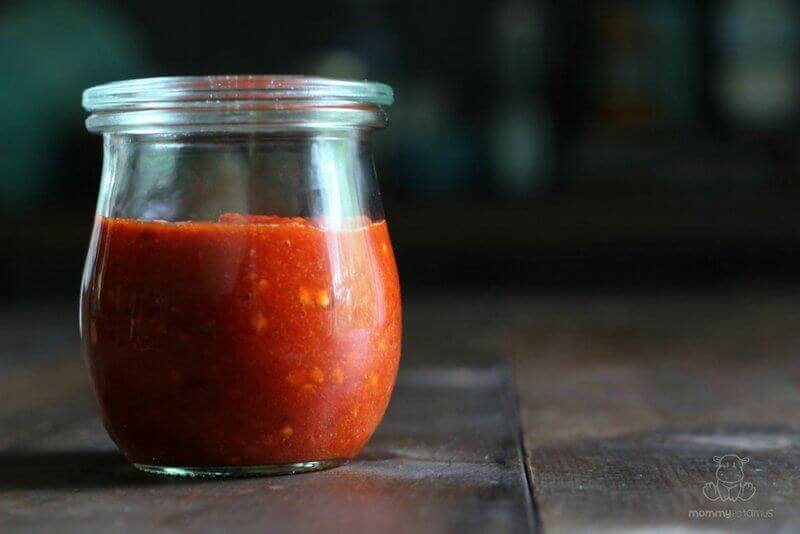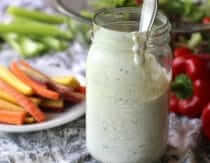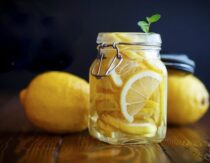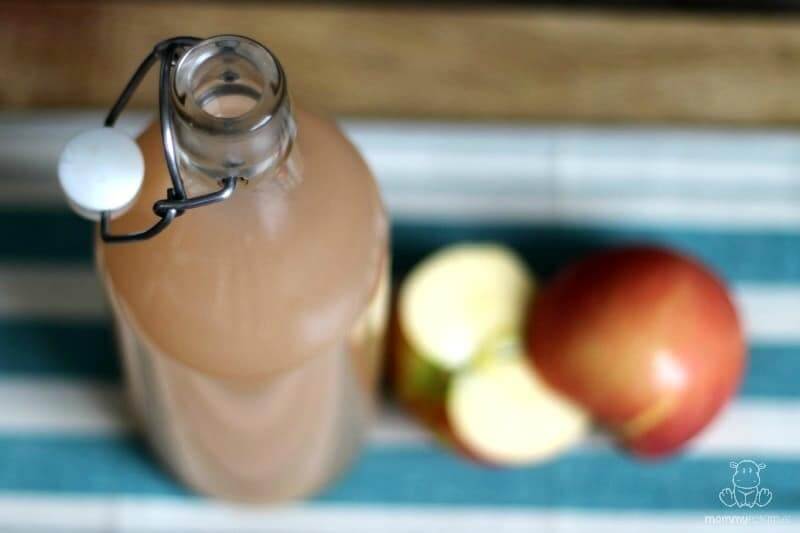
Note from Mommypotamus: What do scented jelly jars and a tutorial on how to make apple cider vinegar have in common? They’re both the subjects of half-written posts sitting in my drafts folder, of course! The jelly jars, which sprouted alien mold and sent colonies to mars, will never see the light of day.
Lucky for you, though, Carly of Modern Hippie Housewife has an amazing tutorial for making apple cider vinegar that she’s sharing with us today. I can’t wait to make up a batch for fire cider, hair detangler, and homemade cough syrup!
I didn’t know it at the time . .
But I was actually aware of fermentation before I knew exactly what it was. When I was a kid, I remember my Nana telling us stories about making sauerkraut and pickles in large crocks – “Like that one,” she’d say, as she pointed to an old crock that, at the time, my mom had filled with dried flowers.
Its been a few years now since I started my own fermentation journey. One rainy afternoon, I decided to give homemade sauerkraut a try. It seemed like the appropriate, stereotypical place to start.
Initially, I was a little intimidated. As I read through the steps in my mom’s fermentation book, I felt like I was missing something. Could it really be so simple? Just shred cabbage, add salt, pound with a potato masher, and wait?
Sure enough, it really was that simple. And then I was hooked…
Since then, my little curiosity has evolved in to a full-fledged obsession, and I’ve fermented everything from condiments to wine. Fermenting food and beverages truly is one of the most practical, beneficial and rewarding skills that I’ve learned on my journey toward self-sufficiency.
Last September, I decided to give apple cider vinegar a try. It was an obvious choice since friends of ours had an over-abundance of apples and I had already fermented apple sauce. We also use a TON of ACV in our household – I’m sure more then the average.
But before I go any further, let’s talk a little bit about the basics of fermentation. Perhaps you’re reading this and thinking, “Who is this crazy, fermentation lady, and what the heck is fermented food?” Ok, let me very briefly explain – a little fermentation 101 will also make the process easier and help with any trouble-shooting along the way.
What is fermentation?
Fermentation takes place in the absence of oxygen (an anaerobic environment), and in the presence of beneficial microorganisms (yeasts, molds and bacteria) which obtain their energy through fermentation. During the fermentation process, these microorganisms break down sugars and starches into alcohols and acids – lactic acid and acetic acid (a.k.a vinegar!) What you’re left with is a food that has been transformed into a more nutritious version of itself, which can be stored for much longer without spoiling.
In sum, by fermenting food, you’re giving it nutritional superpowers, and a longer life. Superfood, if you will.
Fermented food goes far beyond sauerkraut–you can actually ferment almost every food group! Fermenting grains gives you sourdough bread and beer, fermenting meat gives you salami, fermenting dairy gives you yogurt and cheese, fermenting veggies gives you pickles, and fermenting fruit gives you cider and vinegar! The possibilities are really endless.
You can read my full article on Fermentation 101: The Very Basics on Fermenting Food HERE.
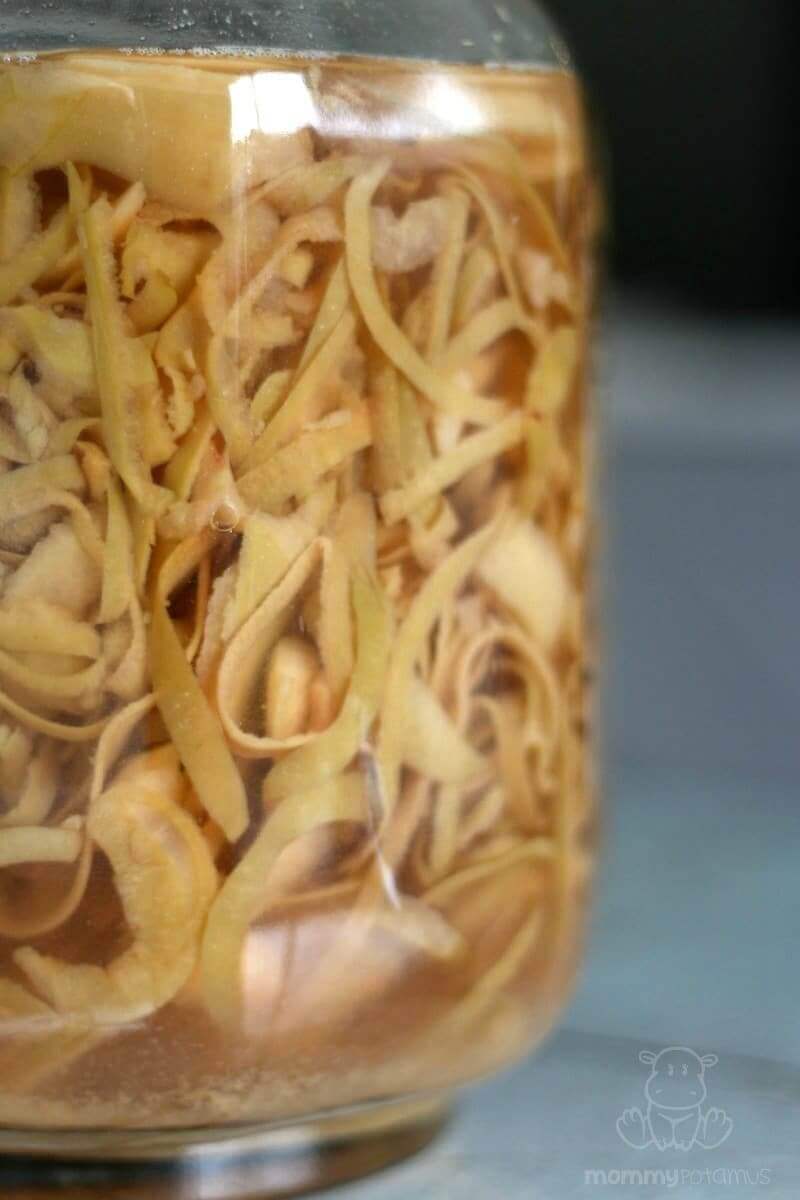
The Transformation from Apples to Apple Cider Vinegar
There are three types of fermentation: lactic acid fermentation, ethyl alcohol fermentation, and acetic acid fermentation. To make apple cider vinegar, we’ll be utilizing acetic acid fermentation.
Acetic fermentation takes place when alcohol is exposed to air and is converted to acetic acid, which, like I mentioned before, is another word for vinegar! Yes, your apple cider vinegar was once good ol’ apple cider.
You’ve probably noticed that if you leave a bottle of wine out, uncovered, for too long, it starts to smell and taste a bit vinegar-y…well, now you know why!
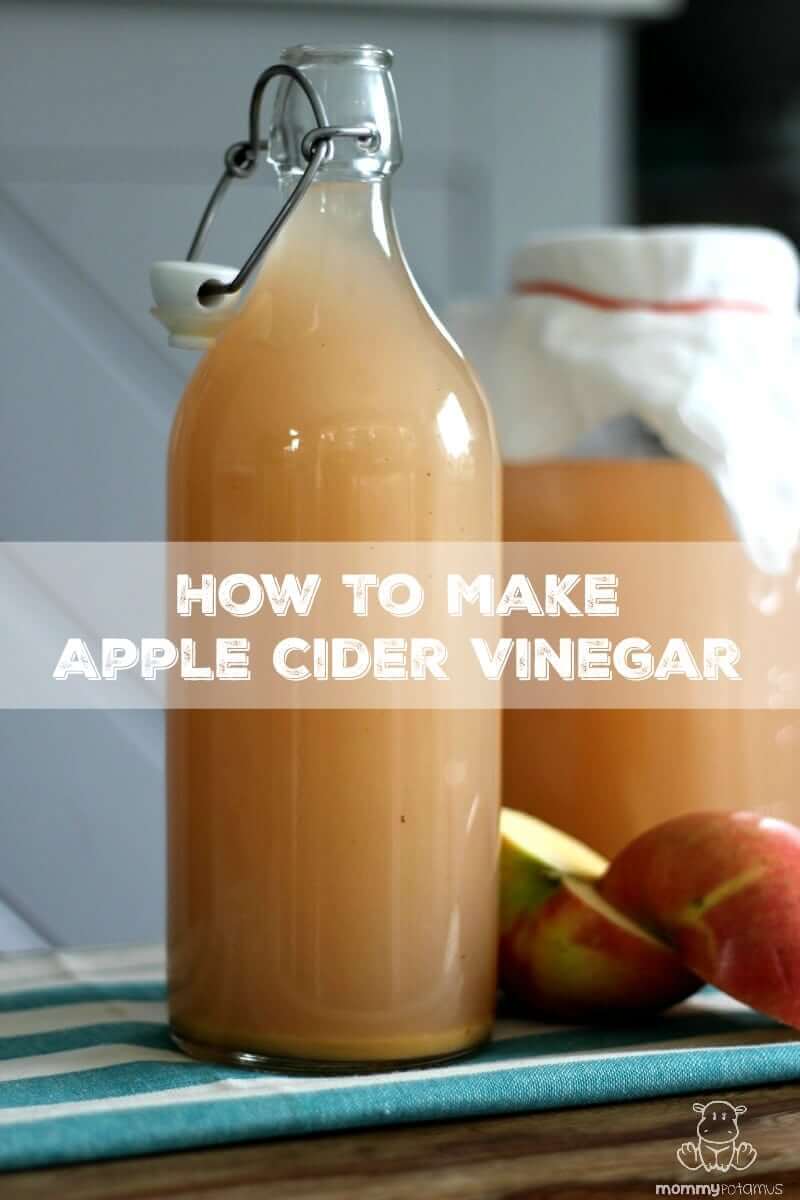
How to Make Apple Cider Vinegar
Learning how to make apple cider vinegar is a pretty forgiving and simple process. No real skill is required, and all you need is apples, some raw cane sugar, water and patience.
I don’t use exact ratios for this recipe because the amounts vary depending on the size of your jar and the amount of apples or apple scraps you use.
You’ll need:
- A large, glass jar (half gallon mason jars work well)
- Cheese cloth + an elastic band to secure over the jar
- A glass weight (used to hold the apples below the surface of the water)
- Organic apples
- Filtered water
- Raw cane sugar (about 2-3 tbsp. for each half-gallon jar )
Step 1 – Prep
Prep your area – The only real thing that you’ll want to be cautious about is that the apples, utensils, jar and surface area that you’re working on is very clean – you don’t want to introduce any bad bacteria into the fermenting process, as it will spoil your ACV. Clean everything in warm, soapy water and leave to air-dry.
Prep your apples – Clean your apples in a sink full of cold water and wipe them down with a cloth to remove any residue or dirt. Make sure to cut off any yucky bits, bruises and blemishes before-hand – if you wouldn’t eat it, don’t use it for your ACV.
For this batch of ACV I used only the peels, and some of the core pieces, which I had left over from making apple sauce – very little apple made it to the compost!
If you’re using the whole apple, dice it in to small, half-inch pieces.
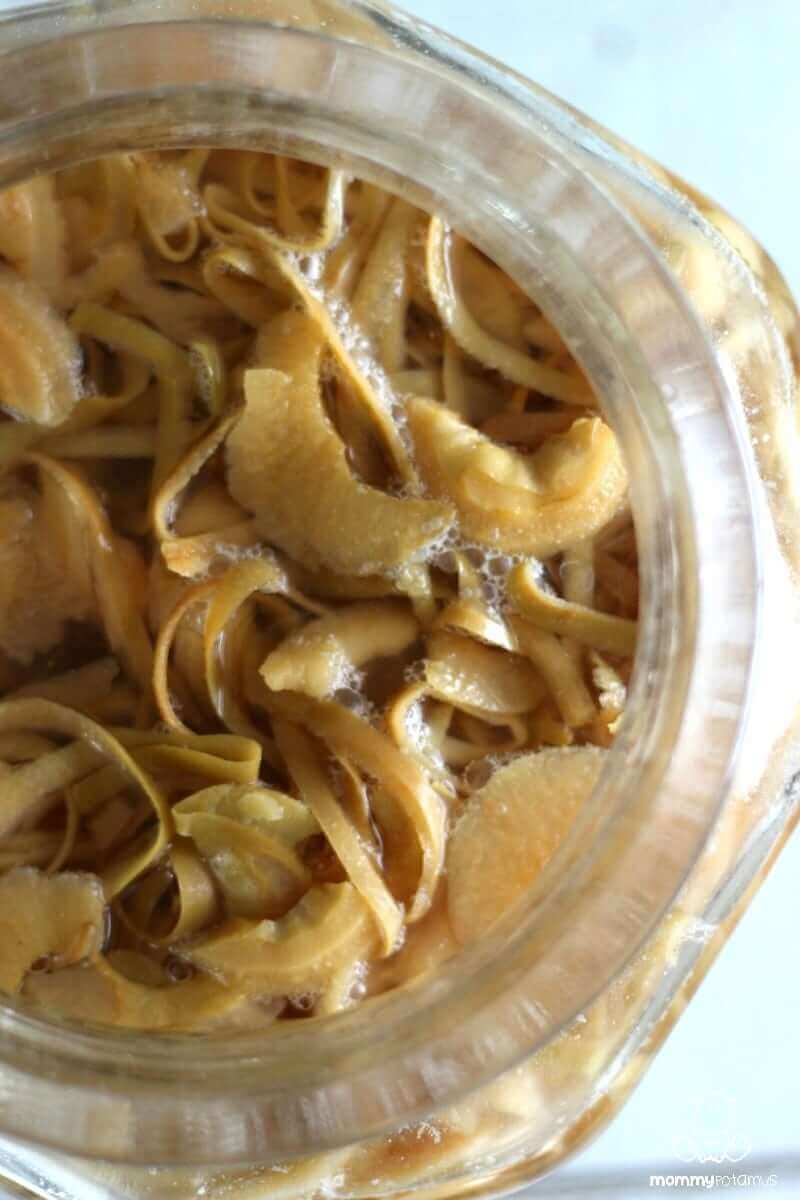
Step 2 – Assemble
Fill you jar 3/4 full of clean, diced apples.
Cover the apples with water and sprinkle with the sugar. The sugar will act as food for the beneficial bacteria which will help move the fermentation process along. (I’ve also made it without sugar, and instead used a 1/2 cup of ACV as a “starter” which worked well, too!)
Submerge the apples below the surface of the water. You’ll need to use a weight to prevent the apples from floating to the surface. I use special, glass fermentation weights, but you may have to get creative. Many people use a clean zip-lock bag filled with water, or a plastic lid, perhaps left-over from a yogurt or sour cream container, cut to size and then held down with a sterilized rock. Again, you may have to get creative. If there are pieces of apples left exposed to the surface air, they may mold which will spoil your ACV.
Cover the jar with a doubled-up piece of cheese cloth, and secure it with an elastic band to prevent fruit flies and critters from getting in.
Step 3 – Wait
Store your soon-to-be ACV in a room-temperature environment, away from direct sunlight (like in your pantry, or tucked away in an undisturbed corner of your kitchen) and leave it to ferment for 4 weeks. If the room is cooler then “room temperature” (about 70°F) then your ACV will take longer to ferment.
In about 3 days you should see little bubbles forming – this means it’s working! The beneficial bacteria are breaking down the sugars into CO2!
Check on the ACV every few days to ensure that the apples are still submerged. It should smell sweet in the beginning, and then eventually start to smell more and more sour.
Step 4 – Strain & Store
Something similar to a kombucha “mother” may form on the top, which is great – you can use it as a starter culture for your next batch of ACV, if you like. Simply store it in a small jar with some ACV, like you would your kombucha mother.
After about 4 weeks, it should be ready to strain. Use a cheese cloth to squeeze out, and break down, as much of the apple as you can.
Pour the liquid back into the jar, cover again with the cheese cloth, and leave it to ferment for another 2-3 weeks, stirring every few days.
Once it has developed the taste that you desire, you can now bottle it, seal it with a lid and start to use it.
About Carly Daley
Carly is passionate about the environment, sustainable living, and cooking healthy (yet delicious!) meals for her family. She’s a proud “modern hippie housewife” and mama of two!
Her hobbies include traveling, fermenting food and beverages, cooking from-scratch, gardening, dancing, DIY-ing almost everything, and relaxing after a long day by tuning in to whatever Netflix show she’s currently addicted to with her husband.
You can follow Carly’s journey over at ModernHippieHousewife.com, where she shares how easy it can be to live a cleaner, greener life!

